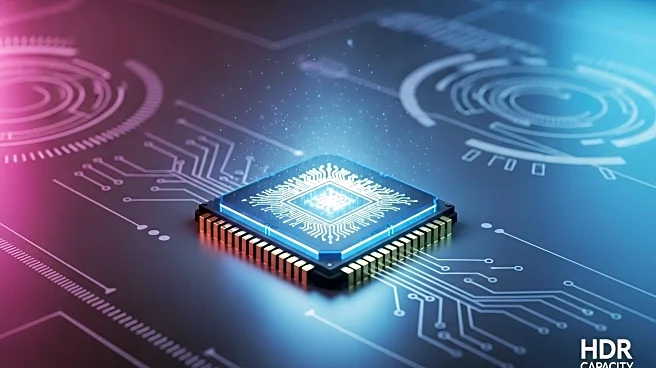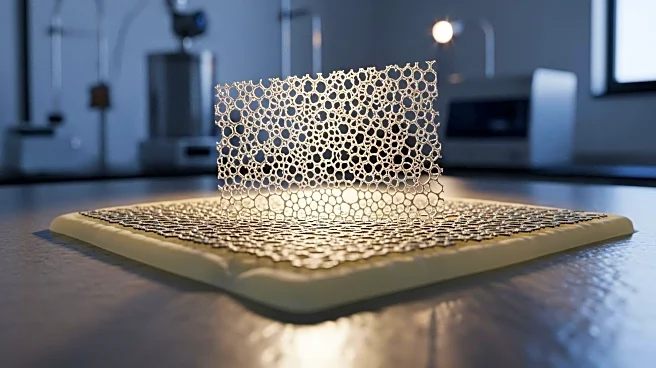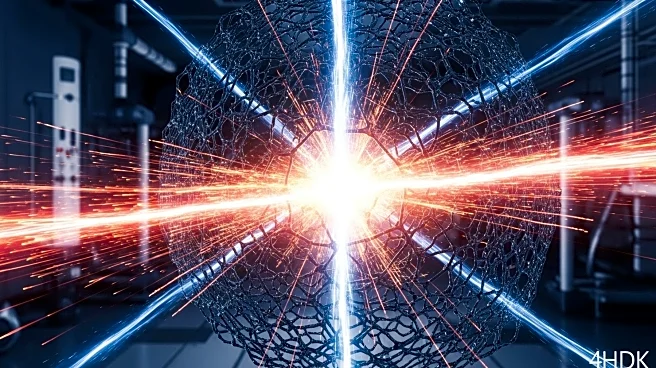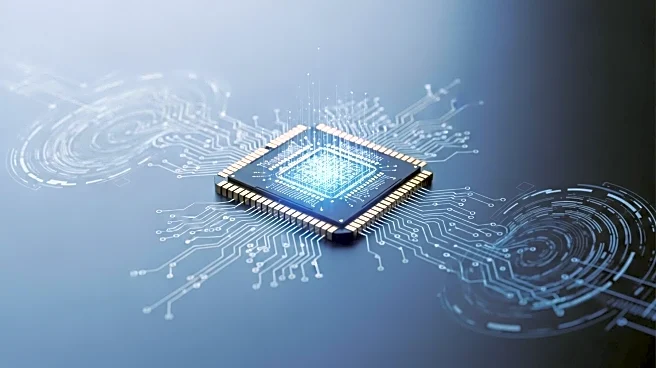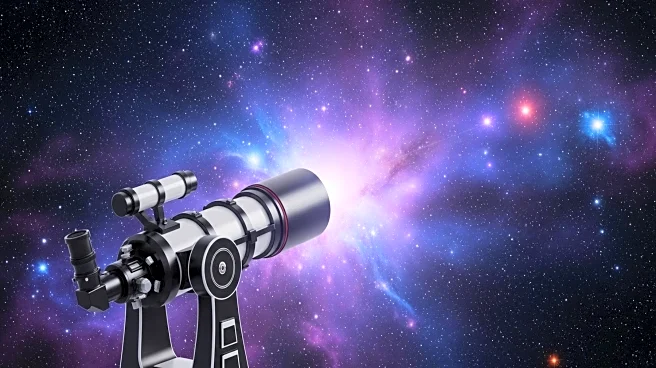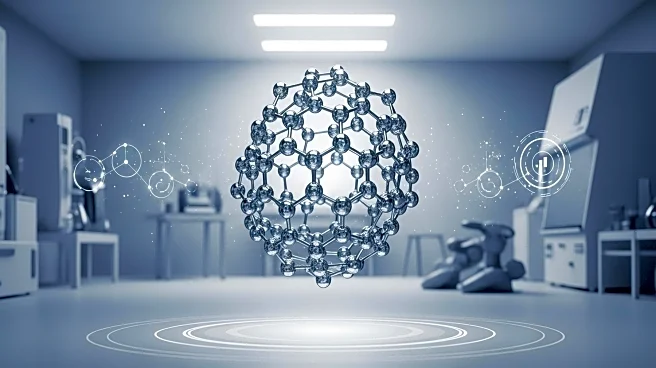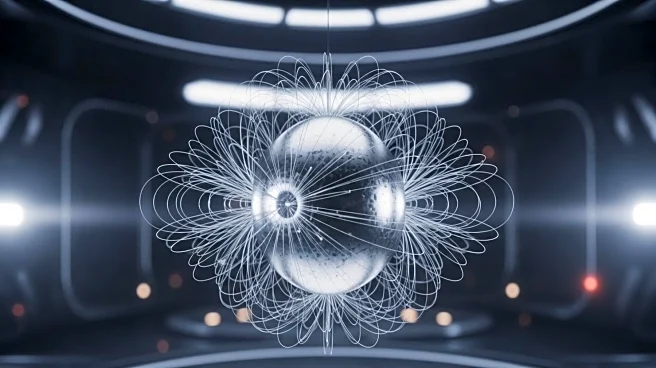What's Happening?
Researchers at Columbia University have successfully pushed electrons within graphene to supersonic speeds, resulting in the creation of shockwaves. This breakthrough was achieved by engineering a microscopic nozzle from two layers of graphene, forming a 'de Laval nozzle' that allows electrons to accelerate and form a shockwave. The experiment involved mapping the voltage of electrons across the nozzle using a specialized microscope, a technique that had not been previously applied to observe hydraulic jumps with electrons.
Why It's Important?
This discovery is pivotal in the field of condensed matter physics and could have significant implications for the development of new electronic devices. By understanding how electrons can be manipulated to achieve supersonic speeds, researchers can explore new ways to generate infrared and radio waves, potentially leading to innovative technologies in communication and energy generation. The ability to create and control electrically-charged shockwaves opens up new avenues for research and application in various scientific and industrial fields.
What's Next?
Future research will focus on exploring the potential emissions associated with these electrically-charged shockwaves, which could lead to the development of new types of generators. Researchers will continue to investigate the fundamental properties of graphene and its applications in electronics, aiming to refine the techniques used to achieve and measure these supersonic speeds. Collaboration with theorists and experimentalists will be crucial in advancing the understanding and practical applications of this phenomenon.

